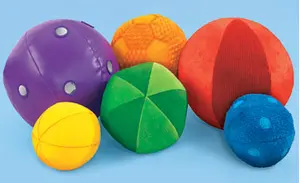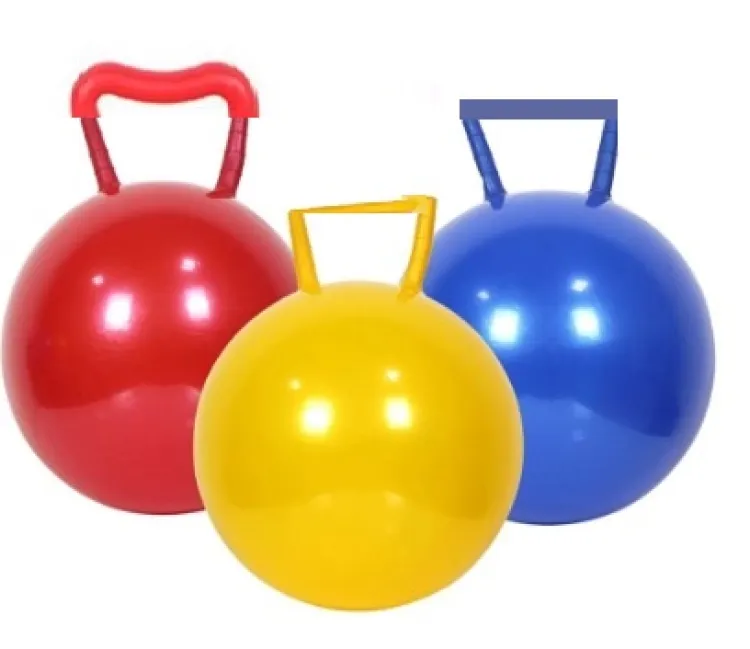Playtime Wonders: The Ball is in Your Court Toss, Roll, Bounce
Toy balls are versatile playthings with a rich history. This guide explores their types, benefits, and popular uses. From physical exercise to stress relief and pet entertainment, balls offer a wide range of applications. Safety tips are included, along with recommendations for trusted brands. This article also emphasizes how toy balls cater to various needs, from physical exercise to therapeutic and educational purposes. The article also highlights safety precautions and suggests popular brands for quality options.
Types of Toy Balls and Their Benefits

Toy balls have been a source of entertainment and joy for people of all ages for centuries. From simple rubber balls to complex interactive toys, they come in various shapes, sizes, and materials, each designed to serve a specific purpose.
A Brief History
The concept of a spherical toy dates back thousands of years. Ancient civilizations, including the Greeks and Romans, created rudimentary versions of toy balls using materials like leather and animal bladders. Over time, as materials and manufacturing processes evolved, so did the design and functionality of toy balls.

Types of Toy Balls
1. Rubber Balls
- Description: Made of natural or synthetic rubber, these balls are bouncy and versatile, making them suitable for various activities.
- Uses: Playground games, bouncing, fetch with pets.
2. Stress Balls
- Description: Typically made of foam or a squeezable material, stress balls are designed to be squeezed and manipulated to alleviate stress and improve hand strength.
- Uses: Stress relief, hand exercise.
3. Interactive and Electronic Balls
- Description: These balls often incorporate technology, featuring lights, sounds, or motion sensors. They can respond to touch or movement, providing an interactive experience.
- Uses: Pet toys, interactive games, sensory stimulation.
4. Exercise and Fitness Balls
- Description: Large, inflatable balls used for fitness, balance, and core-strengthening exercises.
- Uses: Yoga, Pilates, core workouts.
5. Foam Balls
- Description: Soft and lightweight, foam balls are ideal for indoor play, particularly for young children.
- Uses: Indoor sports, sensory play.

Uses Of Toy Balls
Physical Exercise and Play:
Toy balls are excellent tools for physical activity. They encourage movement, improve coordination, and enhance motor skills. Activities like kicking, throwing, bouncing, and catching engage various muscle groups.
Outdoor and Indoor Games:
Many popular games revolve around the use of balls. These can include classics like soccer, basketball, baseball, and tennis, as well as more casual games like catch, dodgeball, and kickball.
Pet Toys:
Balls are a staple in pet playtime. Dogs and cats, in particular, love chasing, fetching, and chewing on balls. Specially designed pet balls can be durable and may incorporate features like squeakers for added entertainment.
Sensory Play:
Soft, textured, or bouncy balls can be used in sensory play for young children. They provide tactile stimulation and help develop a child's sense of touch.
Therapeutic Use:
Stress balls, made from malleable materials, are often used as stress-relief tools. Squeezing a stress ball can help release tension and promote relaxation.
Exercise and Fitness:
Large inflatable balls, often known as stability or exercise balls, are used for a variety of fitness activities. They're great for improving balance, core strength, and flexibility during exercises like yoga, Pilates, and stability ball workouts.
Educational Tools:
Balls can be used in educational settings to teach concepts like counting, colors, shapes, and physics. They can also be incorporated into activities that promote hand-eye coordination and spatial awareness.
Therapeutic Activities:
In occupational and physical therapy, balls are frequently used to assist in the rehabilitation of patients. They can aid in exercises for strengthening muscles, improving range of motion, and enhancing fine and gross motor skills.
Social Interaction and Team Building:
Balls are often used in team sports and games, promoting social interaction, teamwork, and sportsmanship. They encourage cooperation and healthy competition among participants.
Entertainment for Events and Parties:
Inflatable beach balls, for example, are a classic accessory for pool parties, concerts, and sporting events. They add an element of fun and can be customized for branding or decoration purposes.
Therapeutic for Pets:
Specially designed massage balls or textured balls can be used for pet massage therapy. These can help relax muscles and stimulate circulation in animals.
Aid for Physical Therapy in Pets:
Physiotherapy or rehabilitation balls are used in veterinary settings to aid in the recovery and rehabilitation of injured or post-operative pets.
Creative Art Projects:
Balls can be used as tools in art and craft projects. For instance, they can be rolled in paint to create unique patterns or used as molds for sculpting.
Decoration and Ornamentation:
Decorative balls, often made of materials like glass, wood, or fabric, are used for aesthetic purposes in interior design and holiday decorations.
Mental Stimulation for Pets:
Puzzle balls and treat-dispensing balls are used to engage pets mentally. They require problem-solving skills and provide mental stimulation.
Safety Considerations
While toy balls offer numerous benefits, it's crucial to use them safely:
- Size Matters: Ensure the ball is an appropriate size for the intended user. Larger balls can pose a choking hazard for small children or pets.
- Material: Check the material for any allergens or toxic components, especially when selecting toys for pets.
- Supervision: Always supervise young children and pets during play to prevent accidents or misuse.
Popular Brands
Several well-known brands specialize in producing high-quality toy balls. Some of these include Nerf, Chuckit!, Kong, and Gaiam.
Fun DIY Projects
For those looking to add a personal touch to their toy balls, consider creating custom designs using fabric, paint, or even incorporating LEDs for a unique twist.

People Also Ask (FAQ)
Are balls good for babies?
Yes, balls can be beneficial for babies in various ways. They provide sensory stimulation, promote gross and fine motor skills development, and encourage hand-eye coordination. Soft, lightweight balls are typically recommended for babies, as they are easy to grasp and pose minimal risk of injury.
What size ball is safe for a 1-year-old?
For a 1-year-old, it's best to choose a ball that is large enough to prevent choking hazards but small enough for them to handle comfortably. A ball with a diameter of about 4 to 6 inches is generally considered safe and appropriate for a 1-year-old.
Why do babies love balls?
Babies are naturally drawn to balls due to their shape, texture, and movement. Balls are visually interesting, and their round shape is easy for babies to focus on. Additionally, the tactile sensation of holding, squeezing, and rolling a ball can be very engaging for a baby's developing senses. The movement of a ball also captivates their attention and encourages them to track and follow it, which supports visual tracking skills.
What age do kids start playing with balls?
Children can start engaging with balls as early as a few months old, when they begin to develop basic hand-eye coordination and motor skills. Initially, they may grasp, squeeze, and explore the texture of the ball. As they grow, their interaction with balls becomes more purposeful, and they may start rolling, throwing, and catching them. By the age of 1 or 2, many children are actively playing with balls as part of their playtime activities.
As with any toy, it's essential to select balls that are appropriate for a child's age and development level to ensure safety and maximize the benefits of play. Always supervise playtime, especially with small children, to prevent any potential choking hazards or accidents.
Toy balls have come a long way from their humble beginnings, evolving into a diverse range of products that cater to various needs and preferences. Whether for play, exercise, stress relief, or pet enrichment, there's a ball out there for everyone. By understanding the different types and considering safety precautions, you can make the most of these versatile and timeless toys. So, grab a ball and let the fun begin!



